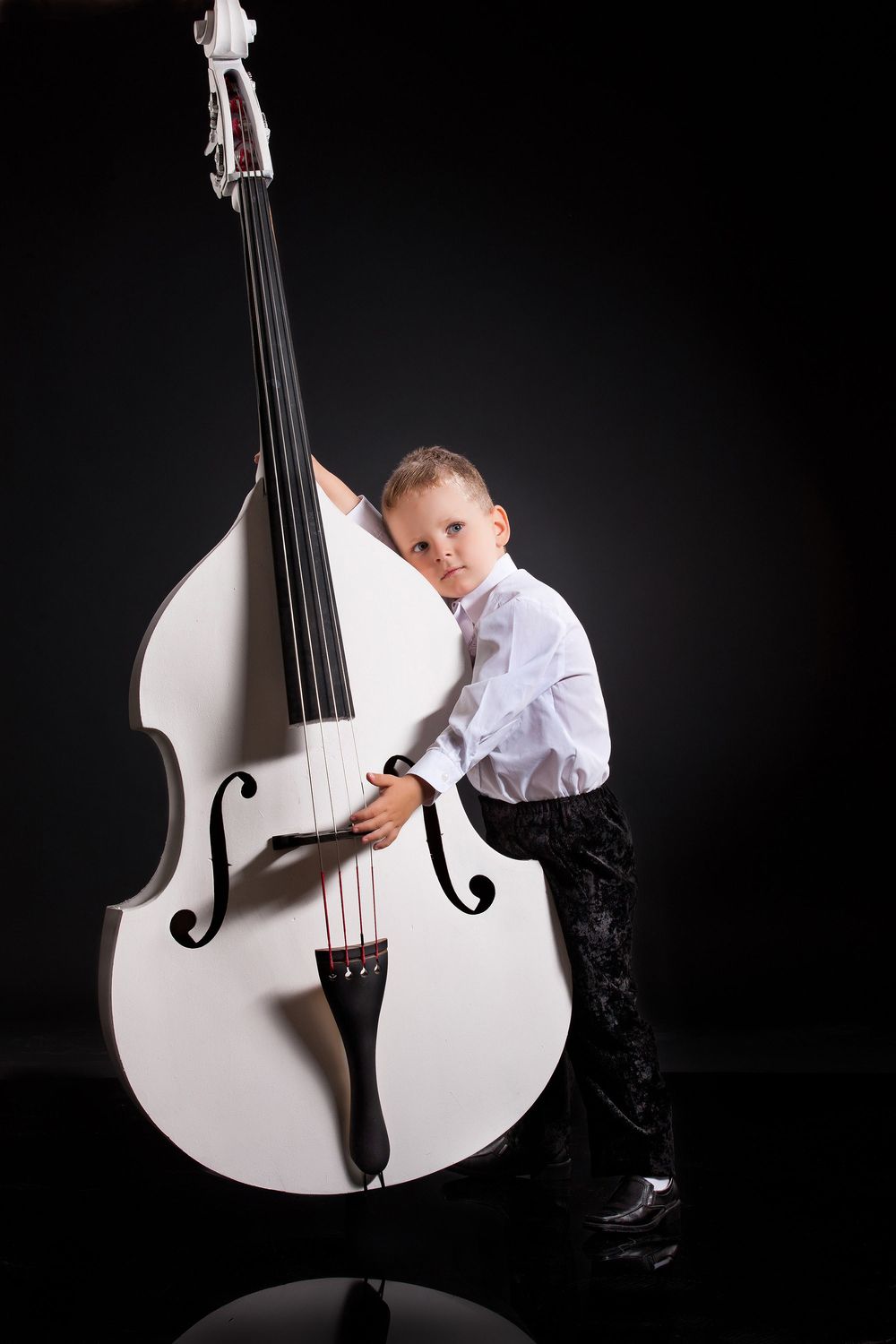3. Shape and Size

Shape
The question of the size of the double bass comes up for almost every bassist, especially in the beginning. While 3/4-sized violins and cellos are considered children's sizes, both 3/4 and 4/4 double basses are adult instruments.
Practically speaking, a larger scale length means the notes on the fingerboard are farther apart. This makes the distances between the notes larger and more challenging to manage.
For beginners, a 3/4 bass is generally recommended, typically featuring an average scale length of 105 to 107 cm. A whole tone can be comfortably played by spanning the distance between the index finger and the pinky.

Size Comparison
While volume and projection are superior with a 4/4 bass due to its larger resonating body, the risk of feedback increases on stage when amplified.
In a classical orchestra, the 4/4 bass is almost the standard. Here, the bass must project acoustically without amplification against the entire orchestra.

The Double Bass in the Orchestra
Ultimately, the choice of bass size also depends on the individual player's body and hand size.

Body Size Matters
Arched or Flat Back
Opinions differ on whether a flat or arched back is better. Physically speaking, an arched back should have the advantage since it gives the bass more volume. One would expect a bass with an arched back to sound louder and fuller than a bass with a flat back. However, practice has shown that there are plenty of flat-backed basses that can match the volume and fullness of any arched back bass.
The sound of a bass is not just determined by the back but also by factors like the thickness and tightness of the annual rings on the top, the positioning of the sound post, and the strength and composition of the bass bar. It is the sum of these factors that ultimately determines the bass's sound character.

Arched or Flat Back
One thing that can be stated with certainty is that a fully carved bass with an arched back is significantly more expensive than a comparable flat-backed bass. While an arched back is standard in laminated and hybrid basses (as plywood layers can be easily pressed into the desired shape by machines), creating an arched solid wood back is much more costly due to the material costs of solid wood and the labor involved.







